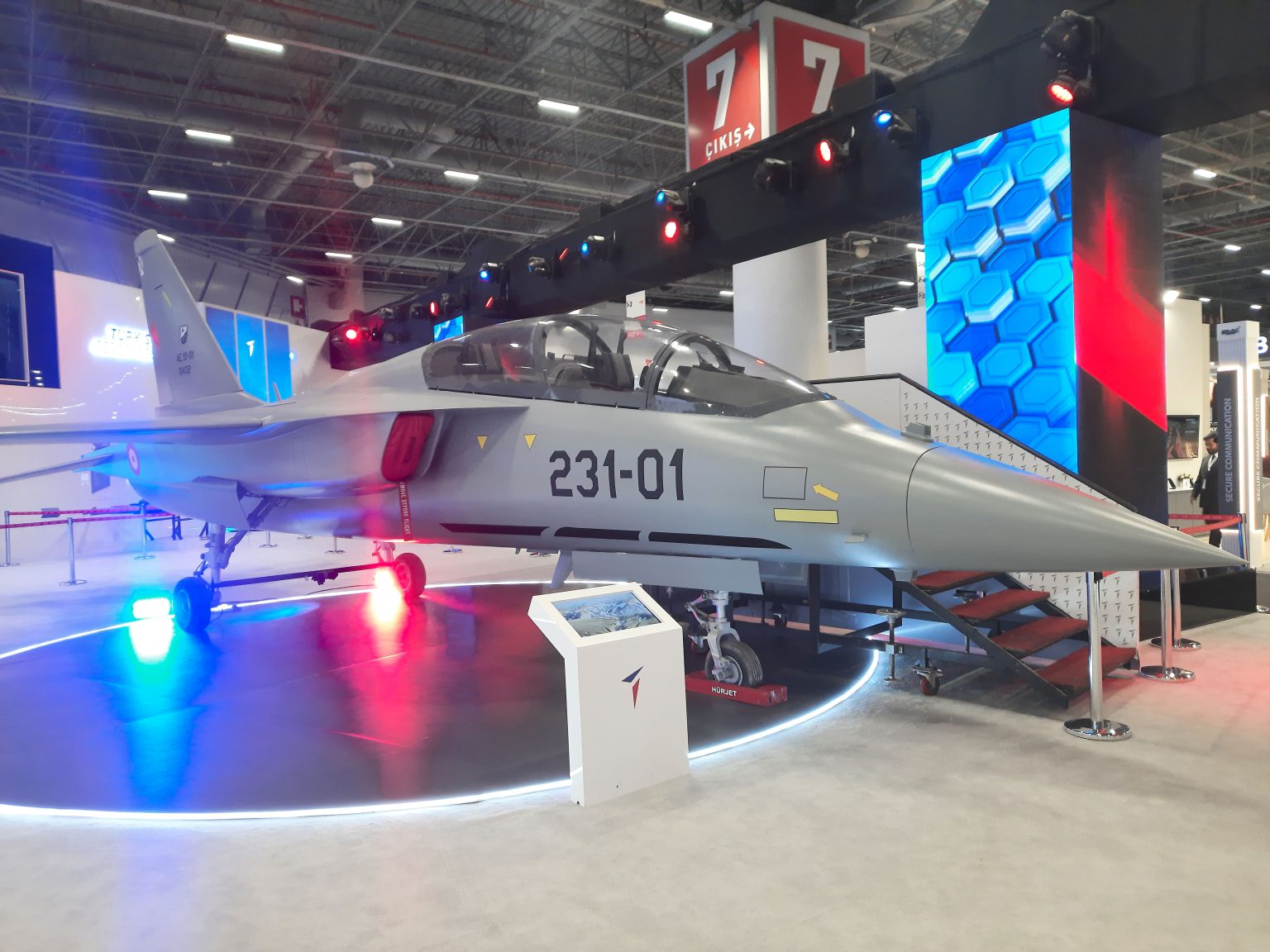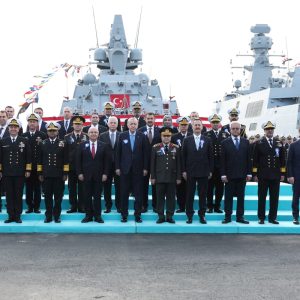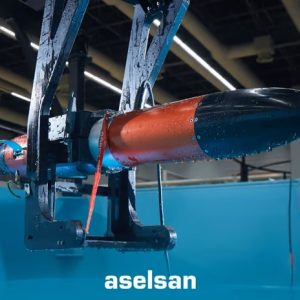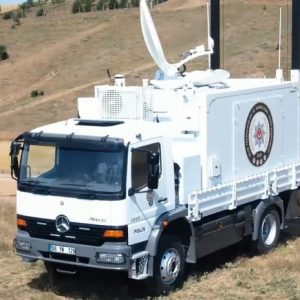Turkish Aerospace Industries (TAI) and Airbus Defence and Space have signed a major cooperation agreement at IDEF 2025 to co-develop and produce a Spanish version of the Hürjet advanced jet trainer. The deal strengthens Türkiye’s defence aerospace footprint in Europe while modernizing Spain’s pilot training fleet for future fighter operations.
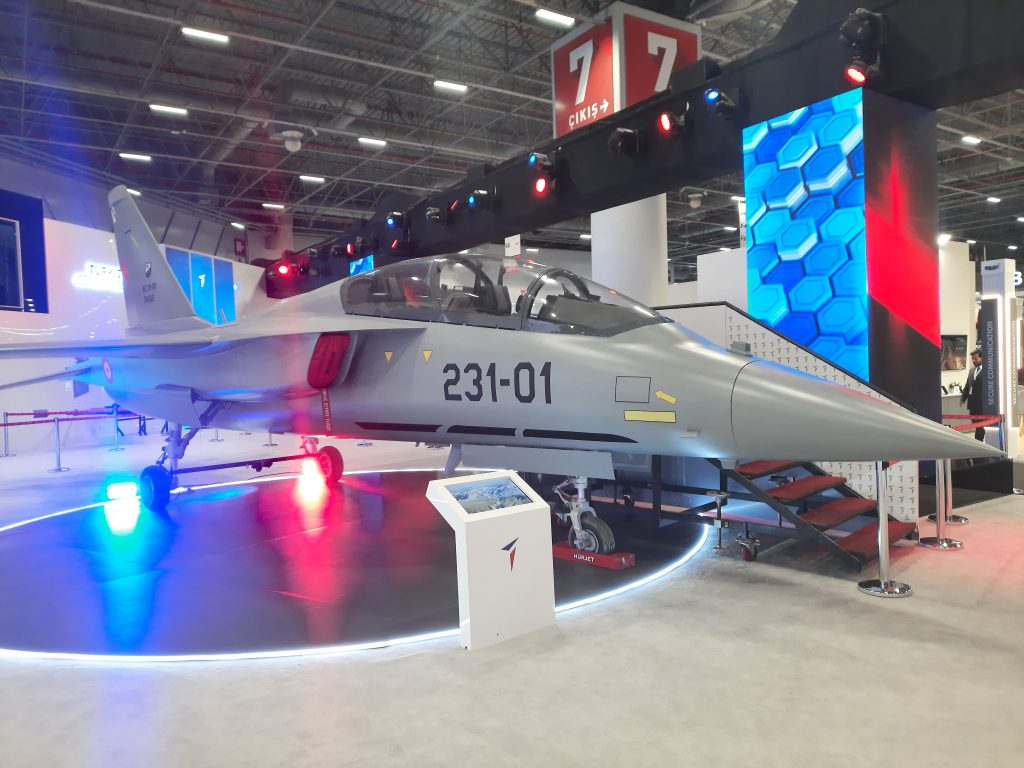
Caption: Turkish Aerospace Industries and Airbus executives sign a strategic cooperation agreement for Spain’s Hürjet acquisition program at IDEF 2025. (Image credit: Defence Agenda)
Key Details of the Agreement
The Spanish Air and Space Force (SASF) plans to acquire up to 30 Hürjets to replace its SF-5M trainers. Deliveries start in 2028. Airbus will lead the integration of Spanish subsystems, while TAI provides its proven airframe and production expertise. Both nations agreed on most workshare terms in late 2024, following flight tests at Torrejón Air Base and the signing of a Memorandum of Understanding between SSB and Spain’s Ministry of Defense.
At FEINDEF 2025, TAI showcased a Hürjet mock-up in SASF livery, highlighting Spain’s selection of the aircraft ahead of contract finalization later this year.
Spanish Industry Role and ITS-C Concept
Under the Integrated Training System-Combat (ITS-C) framework, Airbus will partner with Spanish firms like Airtificial, Aernnova, GMV, Indra, ITP Aero, Grupo Oesía, and Sener to localize avionics, mission systems, and training infrastructure. Airtificial already produces flight control components under a $2.8M contract, with further phases bringing more Spanish technology into future batches.
Spain’s Defence Minister, Margarita Robles, expects the program to generate over €2.8 billion in economic activity, creating approximately 800 direct and 2,600 indirect jobs.
Delivery Timeline
The first six aircraft will match Turkish Air Force specs for speedier delivery in 2028. Later batches will integrate Spanish-built systems for greater national sovereignty while maintaining NATO interoperability.
Impact on NATO and European Defence
Spain’s adoption of Hürjet reflects a European trend for cost-effective supersonic trainers to bridge pilots to fifth-generation fighters. The deal enhances NATO interoperability, spreads development costs, and reinforces transnational supply chains. The Hürjets will join Ala 23 Wing at Talavera La Real Air Base, replacing Cold War-era F-5Ms.
Hürjet Features and Training System
Hürjet is Türkiye’s first supersonic jet trainer, capable of Mach 1.4, 45,000 ft altitude, 6,000 lb payload, and 1,200 NM range. It supports a live-virtual-constructive “Hürjet Training 360” system, embedded training, and advanced simulation suites for faster pilot readiness. Features include fly-by-wire controls, refueling capability, a glass cockpit with HUD/HMD, and advanced datalinks.
Powerplant and Maintenance
The aircraft uses an F404-GE-102 engine assembled and supported locally under agreements with GE Aerospace and TEI, ensuring long-term sustainment autonomy for Türkiye and export users.
Future Prospects
The TAI-Airbus partnership could unlock new European customers and pave the way for joint light fighter or unmanned teaming projects. Combining Türkiye’s rapid development with Europe’s industrial base, the Spanish Hürjet program may become a model for future multinational defence collaborations.
Related reading: Türkiye’s KAAN Fighter to Receive Indigenous Engine by 2032
Source: The Aviationist

